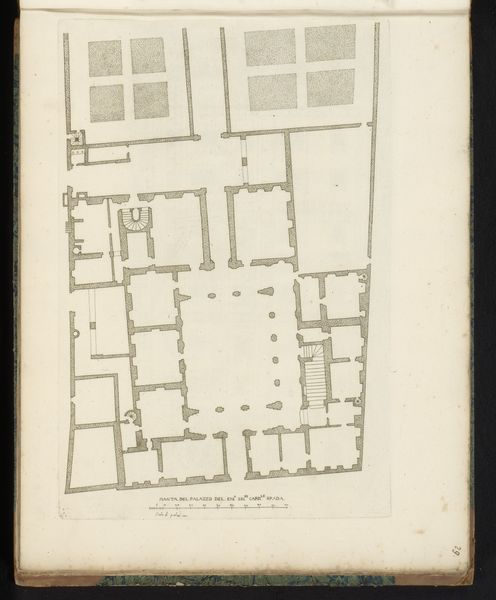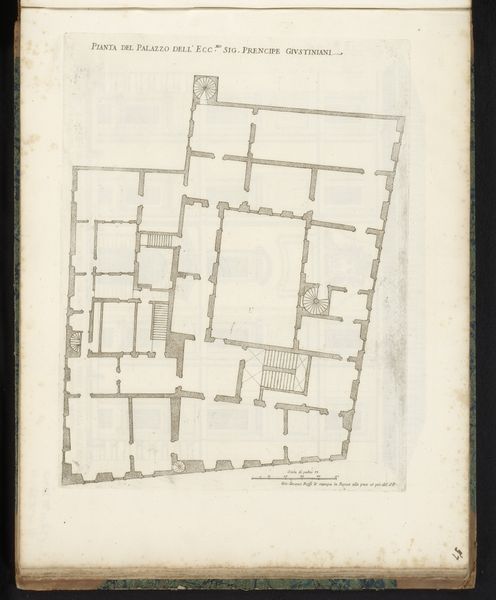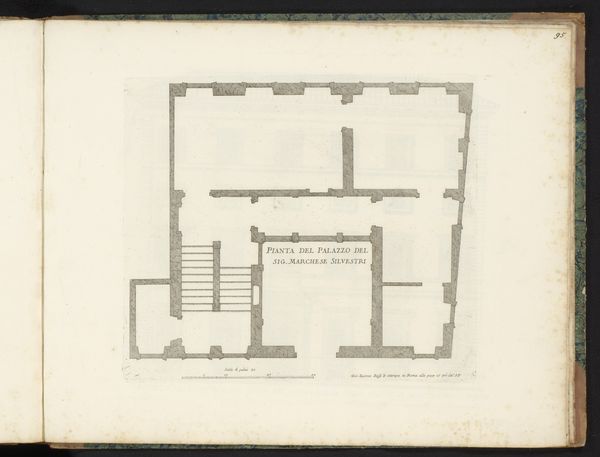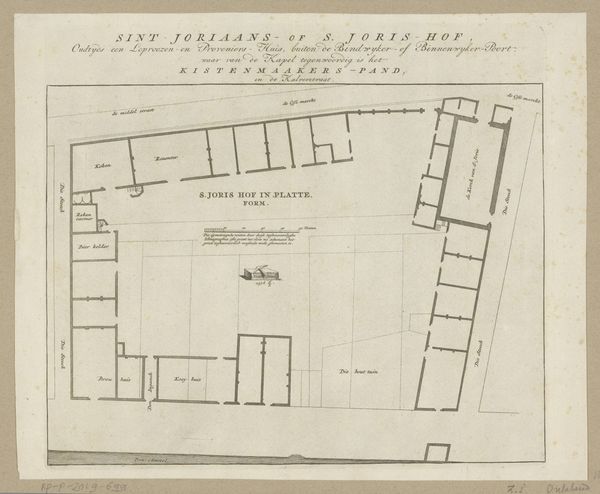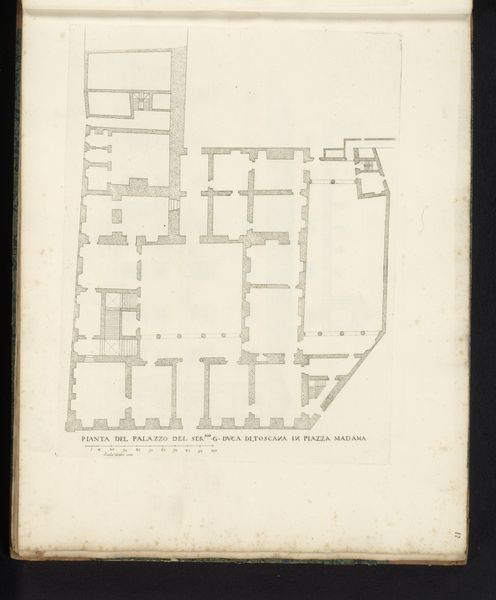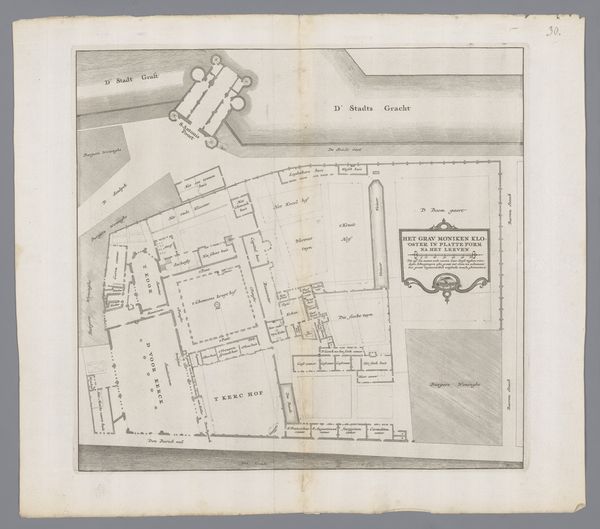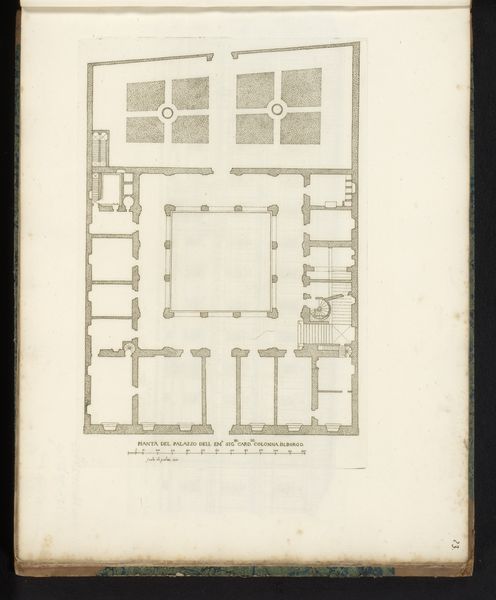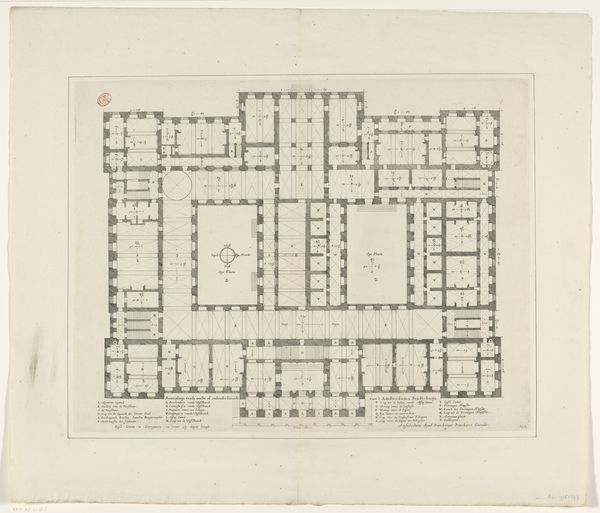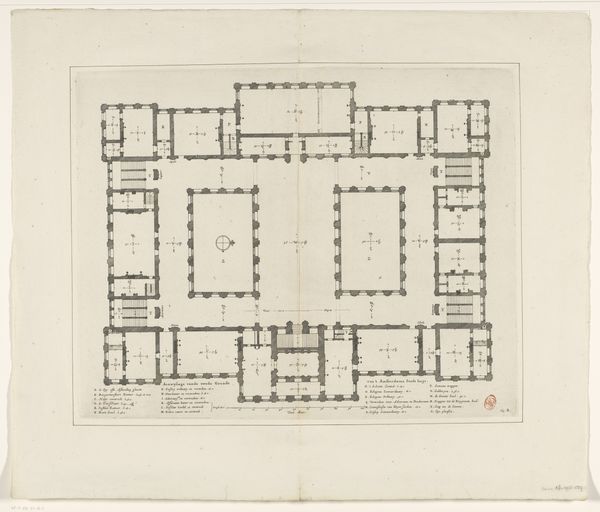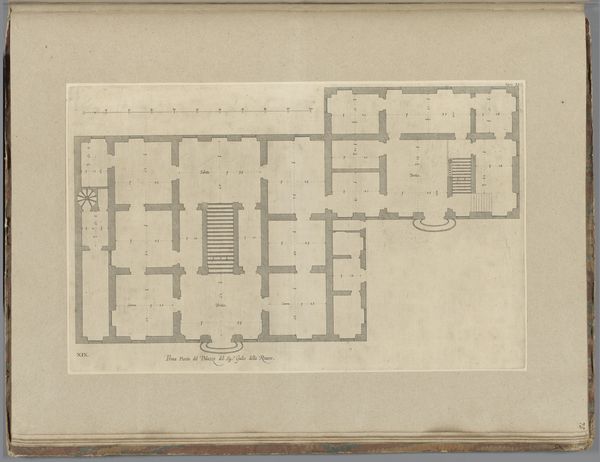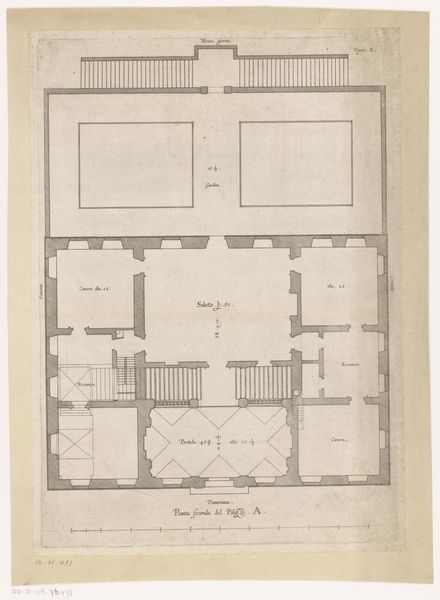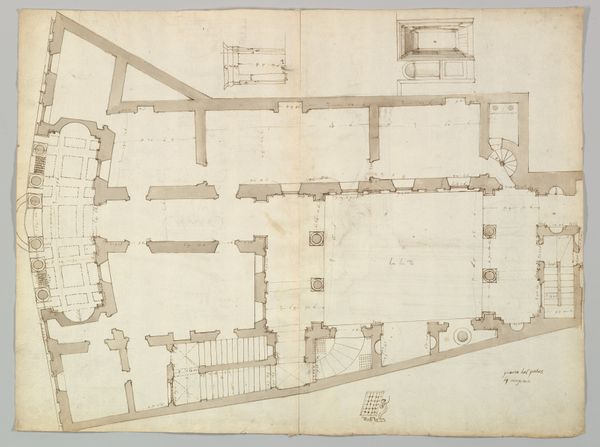
Plattegrond van het paleis van de commendatore van de kerk de Santo Spirito after 1655
0:00
0:00
giovannibattistafalda
Rijksmuseum
drawing, print, etching, paper, architecture
#
drawing
#
baroque
# print
#
etching
#
paper
#
geometric
#
line
#
cityscape
#
architecture
Dimensions: height 291 mm, width 323 mm
Copyright: Rijks Museum: Open Domain
Curator: Giovanni Battista Falda, sometime after 1655, produced this fascinating etching, a "Plattegrond van het paleis van de commendatore van de kerk de Santo Spirito"—basically, a floor plan of a palace. It’s held at the Rijksmuseum. What's your initial impression? Editor: Cold. Sterile. The lines are so precise, it almost feels like an autopsy report of a building. It's technically impressive, of course, but there's a distinct lack of warmth, wouldn't you agree? Curator: Well, consider the context. These floor plans weren't just aesthetic objects; they were tools of power. Architecture, especially the design of palatial spaces, functioned to enforce hierarchies and communicate status in the baroque era. The palace of a commendatore wasn't merely a residence; it was a physical manifestation of religious and secular authority. Editor: I concede that point, but even within that framework, there's an opportunity for the artist to suggest the richness of experience within that structure. This drawing doesn't invite exploration. It dictates order through sheer graphic control. Curator: But perhaps that's the point! The etching mirrors the desire for social and political control. The lines articulate the space and thus the rules governing the people that occupy this religious infrastructure, hinting at an authoritarian dynamic typical of the Baroque, with gendered power relations and religious orthodoxy inscribed into its very foundation. How else would you portray rigid baroque structure through art? Editor: Perhaps by suggesting how light might fall, or how sounds might resonate within these chambers? The diagrammatic approach denies us a sensory relationship to the space. Its focus is solely on outline and dimension. Curator: It’s certainly a powerful exercise in reduction, stripping a place of grandeur to reveal the skeleton. Perhaps that's a commentary in itself. And thanks for making the space warmer just a minute ago! Editor: If not a warmer place, I certainly believe it must evoke emotion. After all, great art has meaning because it can impact the way one views and feels about a subject in consideration. Thanks for fleshing out the historical context and importance that informed my reading.
Comments
No comments
Be the first to comment and join the conversation on the ultimate creative platform.
